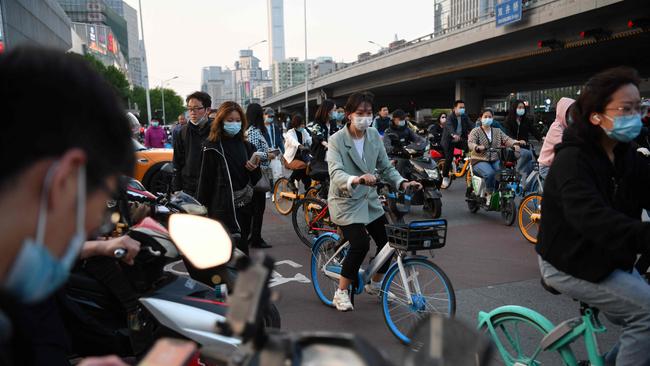China takes great leap backwards as its population falls
China is expected to record its first population decrease in several decades when Beijing releases official census figures after weeks of delay.

China is expected to record its first population decrease in several decades when Beijing releases official census figures after weeks of delay, revealing an intensifying demographic crisis.
The fall would be the first since the famines 60 years ago and would mean the population had peaked – at just under 1.4 billion – a decade earlier than many had forecast. It would also mean that China, the world’s most populous nation for centuries, will soon be overtaken by India. Beijing had planned to release the 2020 census data in early April, but it has been delayed because of some “very sensitive” figures, according to officials. No new date has been set.
Analysts say the signs of a looming crisis have been clear, but the delay has fuelled suspicions that officials, who have not always been honest about population numbers, are massaging the figures. If they show a fall, it would suggest China’s population was entering a slide almost impossible to reverse, with profound economic implications.
Independent experts have long warned of a crisis as decades of restrictive birth policies drastically cut the number of women of child-bearing age. High housing and nursery costs and discriminatory practices against women in the workplace have also damped the desire to have children.
The declining birthrate is straining China’s ability to support a rapidly ageing population: the workforce is shrinking as the number of pensioners soars. It also restricts consumer spending. Smartphone sales declined by 20 per cent last year, and fewer new cars were bought.
This has become a concern for policymakers, who want to see the export-oriented economy buoyed by more domestic consumption. The central bank has called for an easing of curbs on the number of children parents can have.
There have been suggestions that Beijing will have to begin raising the retirement age – now 60 for men and 50 to 55 for women – but that would be unpopular.
China did not abolish its one-child policy until 2016 and still limits most couples to two children. After the relaxation the number of births briefly rose before three consecutive years of decline, dashing hopes of a baby boom. It is likely that the number of newborns fell again in 2020.
In Beijing the number of births in 2020 fell by 32,000 from the previous year’s total, to 100,368. This month the central bank published a research paper calling for an end to restrictions, warning that a “grey rhino” – a rapidly ageing population – was approaching.
“Do not hesitate and wait for the effects of existing policies,” it read. “It would be useless if we relax the policy when no one wants to have children.”
However, the state has called only for a “stronger demographic development strategy”, and some state-backed demographers suggest artificial intelligence and automation could revolutionise our understanding of demographic threats and benefits.
America’s census data, released this week, showed its population was growing, but at the slowest pace since the 1930s because of a falling birthrate. The population is just shy of 331.5 million.
ANALYSIS
China’s economic miracle has been built on the back of a seemingly endless supply of affordable labour.
In the 60 years since Mao’s ruinous Great Leap Forward, the last time it experienced a population decline, China has become a powerhouse.
There are growing signs, however, that Beijing faces a challenge that cannot be met by manpower alone. Its population is shrinking, its citizens are growing older and the workforce that once came with few demands now wants higher pay and more benefits. And, despite Beijing’s best attempts to persuade couples to have more children, fewer are being born.
China relaxed its family planning restrictions in 2016, allowing couples to have two children instead of one. The policy change failed to arrest the population decline.
Ren Zeping, an influential economist, has observed that when the cohort of younger people diminishes, “vigour for innovation and entrepreneurship declines”. The effect of this is felt throughout the economy. “Investment and savings rates fall, the burdens to support the elderly increase, government debts rise and the pressure for social security intensifies,” he said.
Beijing maintains that economists are being alarmist. It says the days of a vast, unskilled workforce are gone. What is now needed is skilled workers assisted by technology. For international observers the demographic crisis is a test of whether China can evolve from an economy built on the size of its workforce to one based on its skills.
The Times







To join the conversation, please log in. Don't have an account? Register
Join the conversation, you are commenting as Logout